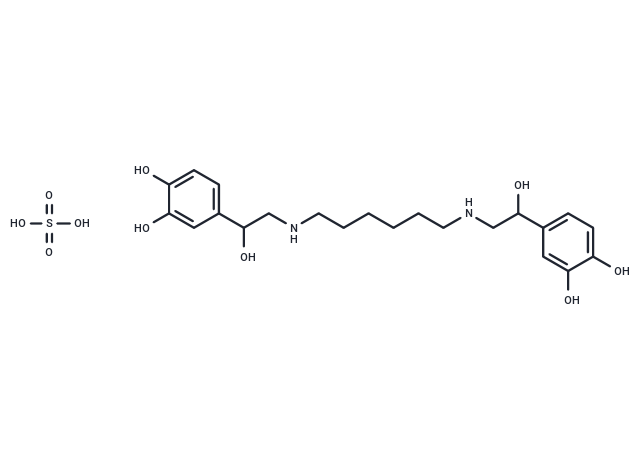Shopping Cart
- Remove All
 Your shopping cart is currently empty
Your shopping cart is currently empty

Hexoprenaline Sulfate is a selective beta2-adrenoreceptor agonist. Hexoprenaline Sulfate is active in man as a bronchodilator by the oral or intravenous routes and by inhalation. Hexoprenaline Sulfate is indicated for use in the treatment of bronchospasm associated with obstructive airways diseases, including bronchitis, asthma and emphysema.

| Pack Size | Price | Availability | Quantity |
|---|---|---|---|
| 25 mg | $1,520 | 6-8 weeks | |
| 50 mg | $1,980 | 6-8 weeks | |
| 100 mg | $2,500 | 6-8 weeks |
| Description | Hexoprenaline Sulfate is a selective beta2-adrenoreceptor agonist. Hexoprenaline Sulfate is active in man as a bronchodilator by the oral or intravenous routes and by inhalation. Hexoprenaline Sulfate is indicated for use in the treatment of bronchospasm |
| Alias | ST-1512, Gynipral, Argocian |
| Molecular Weight | 518.58 |
| Formula | C22H34N2O10S |
| Cas No. | 32266-10-7 |
| Relative Density. | 1.31g/cm3 |
| Storage | Powder: -20°C for 3 years | In solvent: -80°C for 1 year | Shipping with blue ice. |

Copyright © 2015-2025 TargetMol Chemicals Inc. All Rights Reserved.